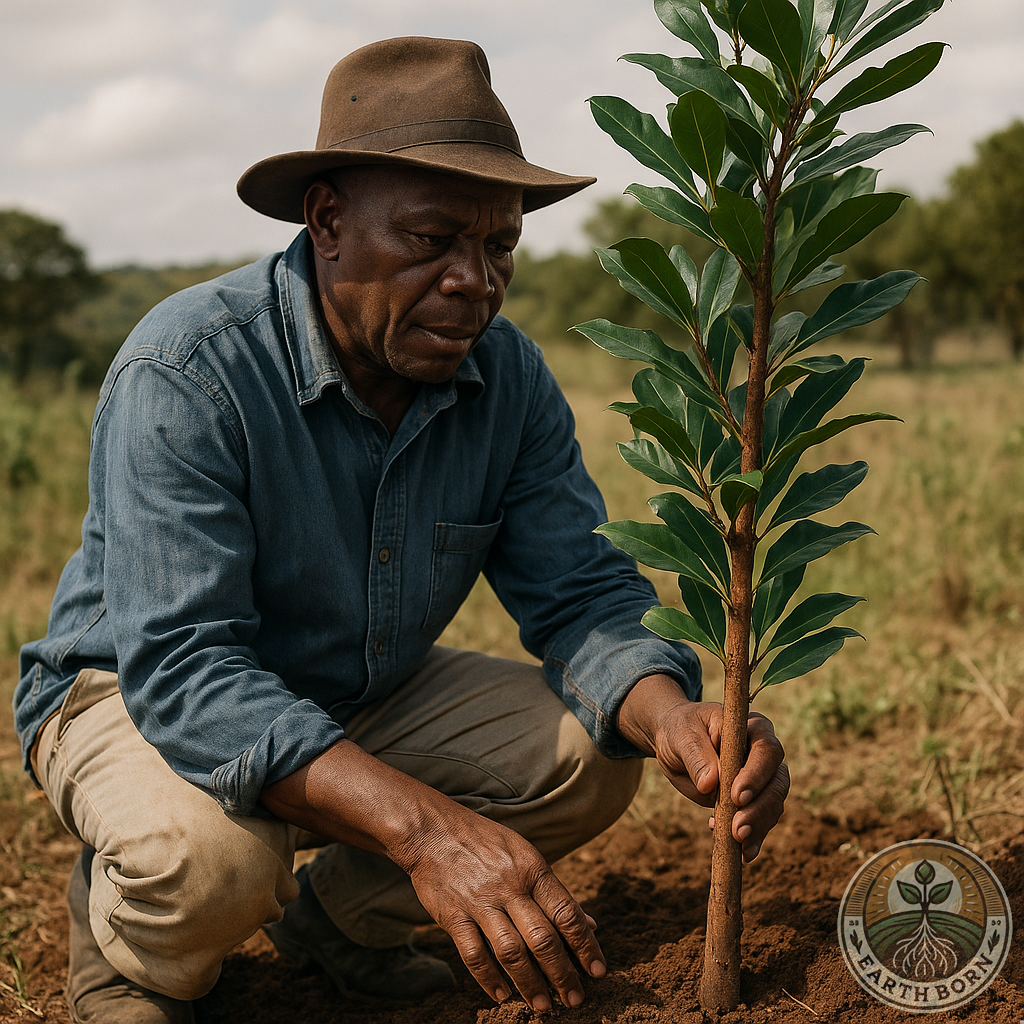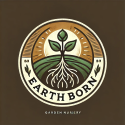
🌱 Introduction and History
The Pepper Bark Tree (Warburgia salutaris), also known as Isibhaha in isiZulu and Peperbasboom in Afrikaans, is a revered evergreen tree indigenous to Southern Africa—most notably South Africa, Mozambique, and Zimbabwe. Belonging to the Canellaceae family, it is named after Dr. Otto Warburg, a German botanist. Traditionally used by indigenous healers, the tree is prized for its aromatic bark and its potent medicinal properties. Due to overharvesting, it is now listed as an endangered species, making sustainable cultivation crucial.
💊 Medicinal Benefits
The bark and leaves of Warburgia salutaris are packed with powerful bioactive compounds like Eugenol, Methyl eugenol, and Isoeugenol. These offer:
- Antibacterial and antifungal properties
- Relief from respiratory ailments such as colds, coughs, and bronchitis
- Aid in digestive issues like ulcers and stomach cramps
- Anti-inflammatory support for joint pain
- Immune-boosting effects, especially in traditional African medicine
It is often made into infusions, decoctions, or powders and has been used as a natural remedy for malaria, fever, and oral infections.
📅 When to Plant in South Africa
🌱 Best time to plant:
Spring (September to November) is ideal for transplanting seedlings that are 6–12 months old. This gives the tree ample time to establish before the dry season.
🏡 Where to Plant
Choose a permanent outdoor location, preferably in a protected area of the garden where the young tree is shielded from harsh winds and frost. This species thrives in larger spaces where its root system and canopy can develop without restriction.
🌞 Soil, Water & Sunlight Requirements
✅ Soil
Prefers loamy, fertile, and well-draining soil rich in organic matter. Avoid water-logged areas.
✅ Sunlight
Needs full sun to partial shade. In hotter climates, a bit of afternoon shade is beneficial for young trees.
✅ Water
Water moderately—2–3 times a week in warmer months, tapering off during winter. Young trees need more consistent moisture until established.
✅ Fertilize
Apply organic compost or slow-release fertilizer twice yearly—once in early spring and again in mid-summer.
✅ Spacing
Allow 5 to 8 meters between trees. This spacing accommodates its mature height and prevents overcrowding.
✅ Seeds Germinate
Seeds can take 2 to 3 months to germinate. Soak in warm water for 24 hours before planting to improve success rates.
✅ Transplanting
Seedlings should be transplanted at 6–12 months when they reach a height of 30–50 cm. Handle carefully to avoid disturbing the root system.
✅ Maturity Height
A mature Pepper Bark Tree reaches 5 to 10 meters, with a rounded canopy and dark green glossy leaves.
🍓 Flowers & Fruit
While not typically cultivated for its flowers or fruit, the Pepper Bark Tree does produce small green to purple berries and tiny greenish flowers in clusters. These have limited ornamental value but contribute to the tree’s ecological role.
🌼 Companion Plants
Although not traditionally paired with specific companion plants, you can grow indigenous understory species like wild garlic (Tulbaghia violacea) or bushman’s tea (Athrixia phylicoides) nearby, which benefit from similar growing conditions and help deter pests.
🐛 Common Pests
- Aphids: Control with neem oil or insecticidal soap
- Scale insects: Scrape gently or treat with horticultural oil
- Fungal issues may occur if overwatered—ensure good airflow and drainage.
🧺 Harvesting
The bark is the most commonly harvested part, traditionally stripped in narrow vertical sections to avoid killing the tree. For sustainability, wait 4–5 years before harvesting, and only take from mature trees.
🫙 Storage
Dry the bark pieces in a well-ventilated area away from sunlight. Once fully dried, store in airtight glass jars or brown paper bags in a cool, dry place. Label with the harvest date and use within 12 months.
🧪 How to Use as Medicine
🌿 Infusion (for colds & coughs):
- 1 tsp dried bark in 1 cup boiling water
- Steep for 10 minutes
- Drink once daily for up to 7 days
🌿 Decoction (for ulcers & digestive pain):
- Boil 1 tbsp chopped bark in 500 ml water for 20 minutes
- Strain and sip slowly
- Use up to twice daily under guidance
⚠️ Disclaimer: These remedies are traditional and not a substitute for medical care. Always consult your doctor or herbal practitioner before use.
🎉 Fun Fact
The bark of the Pepper Bark Tree smells and tastes distinctly like black pepper, which is how it earned its common name. In fact, it’s often chewed raw for its intense peppery warmth—used as a natural breath freshener!
⚠️ Caution
- Endangered species: Avoid wild harvesting. Grow your own or source from ethical nurseries.
- Possible side effects include allergic reactions or irritation when overused.
- Not recommended during pregnancy or breastfeeding.
- Do not use on children under 12 years without professional guidance.
🌿 Ready to Grow Something Powerful?
Be part of the movement to restore and protect endangered indigenous plants. Add the majestic Pepper Bark Tree to your garden and pass on its legacy of healing and heritage. 🌳💚
#EarthbornGrower #WarburgiaSalutaris #IndigenousMedicine #MedicinalTrees #SouthAfricanGardening #EndangeredPlants


 **Meet Sprout!** Sprout is your friendly gardening companion at Earthborn, always ready with helpful advice on plant care, medicinal herbs, and natural gardening solutions. From seedling to harvest, Sprout provides expert guidance to nurture your garden and your well-being—making gardening easy, fun, and naturally rewarding.
**Meet Sprout!** Sprout is your friendly gardening companion at Earthborn, always ready with helpful advice on plant care, medicinal herbs, and natural gardening solutions. From seedling to harvest, Sprout provides expert guidance to nurture your garden and your well-being—making gardening easy, fun, and naturally rewarding.
